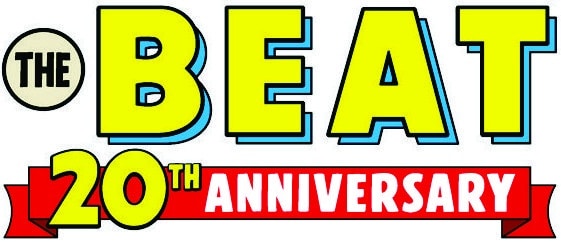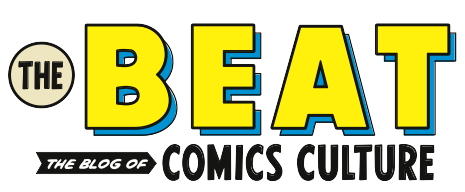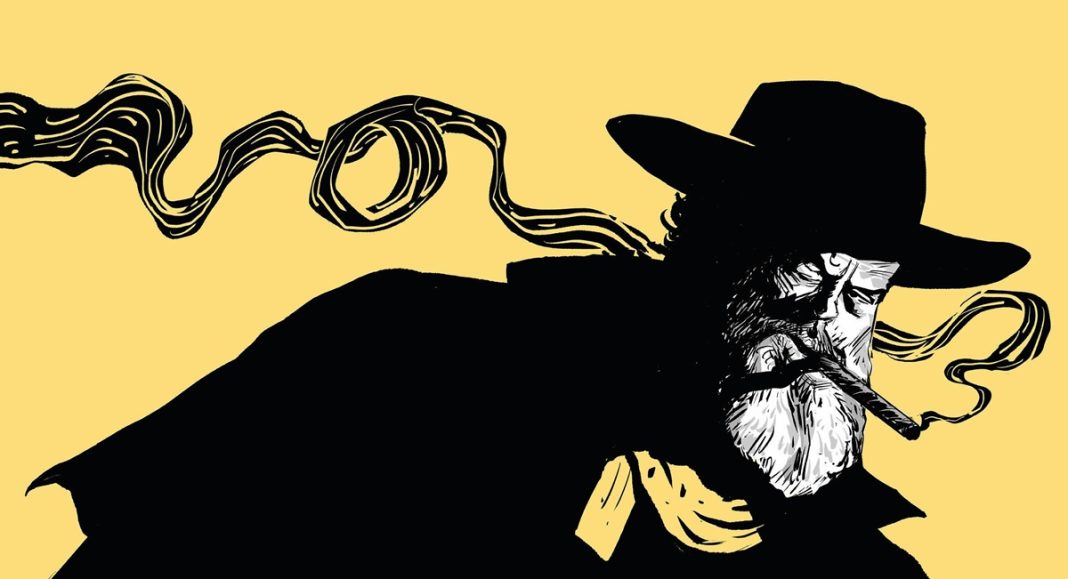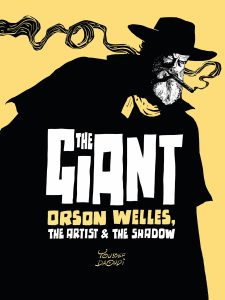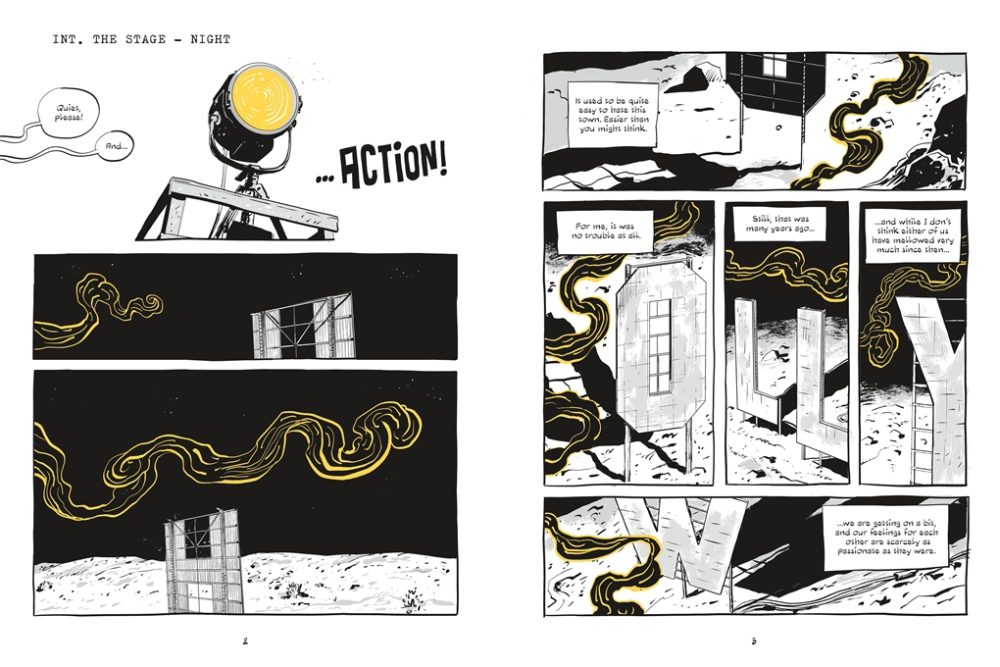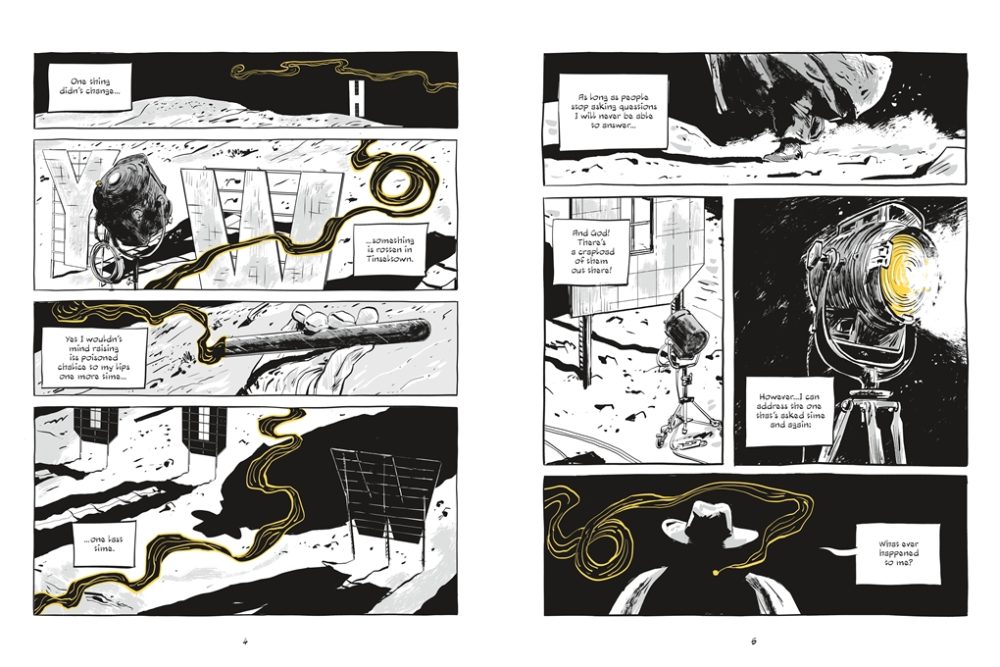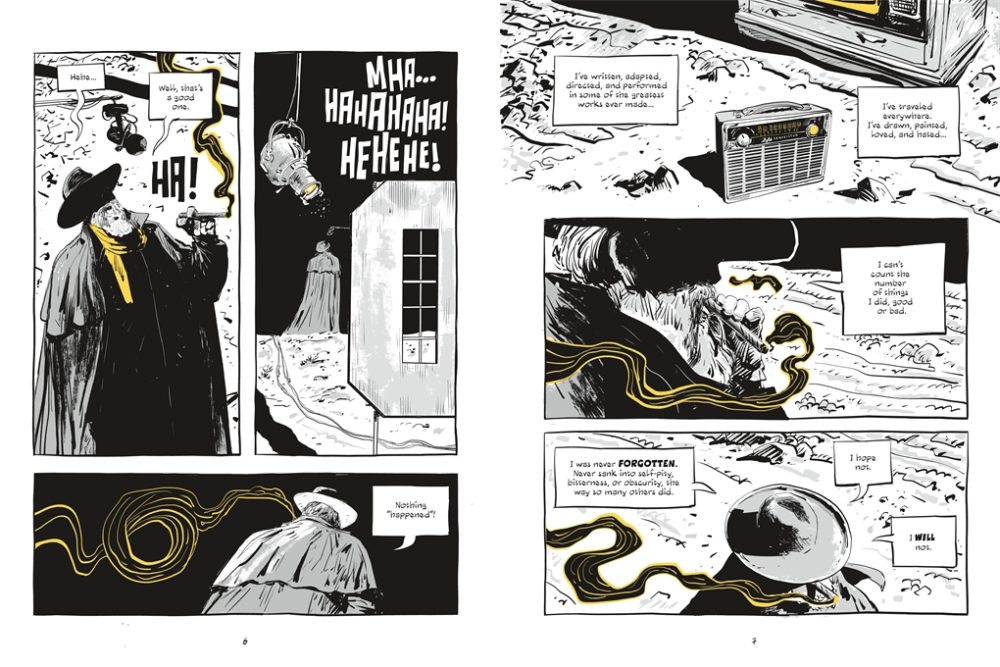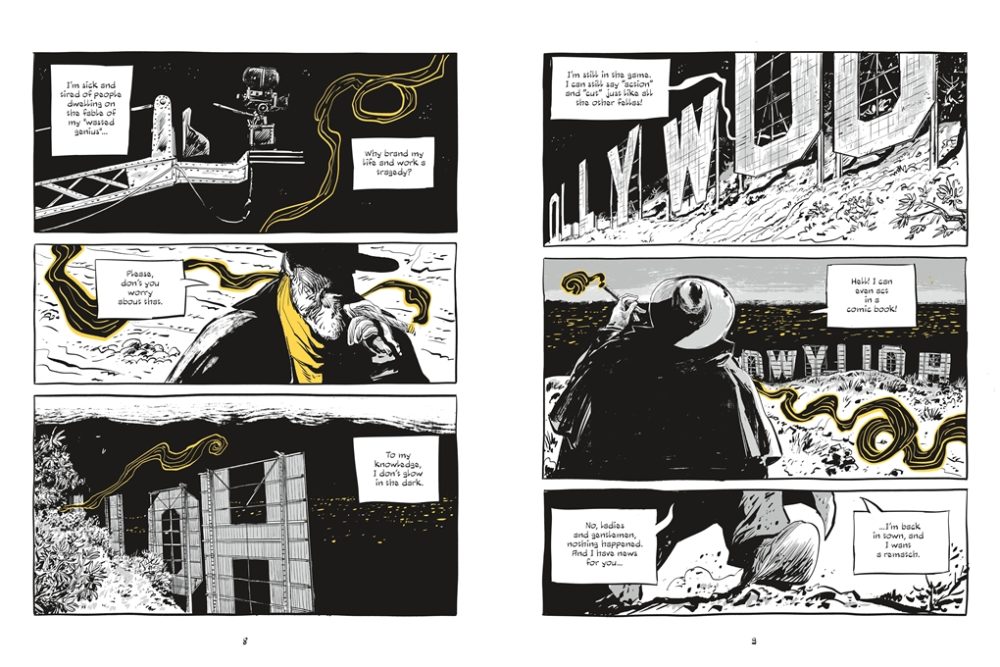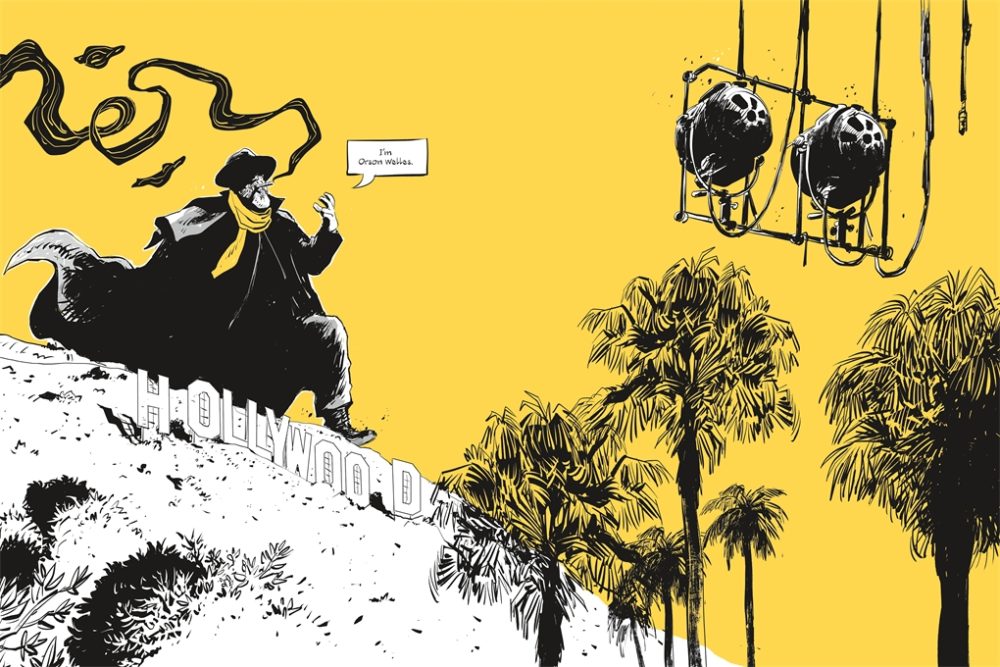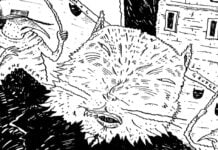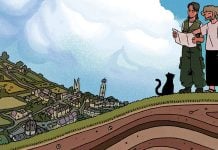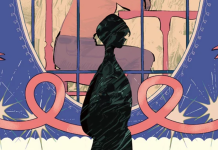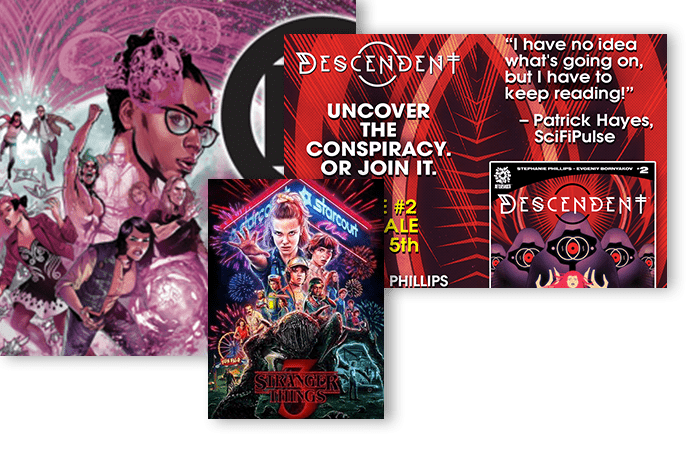 The Giant – Orson Welles, The Artist & The Shadow
The Giant – Orson Welles, The Artist & The Shadow
Writer/Artist: Youssef Daoudi
Publisher: 23rd St. Books
Publication Date: May 2025
The first time I became aware of Orson Welles was through Transformers: The Movie, the 1986 hybrid animated masterpiece/toy commercial. I know how that sounds, but as an elder millennial, it makes sense. In what was to be his final film role, Welles voiced Unicron, a predatory planet so large that it wandered the galaxy in that film, consuming all other planets in its wake, which of course the Transformers wanted to stop (he also turns from planet into giant man, and it’s a whole thing).
I mention this, because that role perhaps shaped Welles in my mind permanently. As I got older, I learned more about the man and his legacy. Indeed, I watched Citizen Kane in a high school film analysis class in the early ’00s that was far better than any high school film analysis class has any right to be. When I got to college, a friend showed me an online reel of outtakes from the commercials Welles did throughout his career when he needed the money. Eventually, I’d come to know even more about the man. And yet, the idea that Welles was a living planet hung stubbornly in my mind.
And it returned to me this month as I was reading French cartoonist Youssef Daoudi’s new graphic novel, The Giant — Orson Welles, The Artist & The Shadow. As both the title and the cover denote, this book sets out to depict Welles as a presence larger than life, a looming figure who cast a long shadow over Hollywood, the United States, the 20th Century, and, perhaps, even our modern perception of the art life, including its pitfalls, its contradictions, and its steady tension with commerciality.
Welles is a vast planet of Hollywood influence and fascinating facts, a man with a true arc (from genius work at 25 to struggling throughout the rest of his career to get a film made) and a true mythos. And this book is deeply committed to that. It bounces throughout the eras of Welles’ life, doing so in ways that connect dots between how his childhood gave rise to his adult life.
In this way, The Giant reads to some extent like a fact heavy biography. Pick up this book, and you will almost certainly learn more about Orson Welles. I know I did. I found the bits about his theater productions incredibly fascinating, including how he produced an all Black version of Macbeth, as well as a production of Julius Caesar that position the title character as the authoritarian leader of a fascist regime in the years preceding WWII.
A palpable amount of research went into this book, without question, and yet makes the bold creative choice to not be constrained by reality, not visually anyway. The imagery in this book bends the rules of reality to emphasize its points and encourage the reader to consider Welles and his legacy in more poignant, meaningful ways. There is a movie theater audience with old-timey film cameras in place of their heads. And those old-timey cameras are a motif that recurs, with a bull fighting scene landing among the best I’ve read in any comic all year.
I was truly amazed at how well Daoudi fashioned the life of Orson Welles into comics. It wouldn’t have occurred to me, but his was a life that really lent itself to interesting cartooning, ranging from how Daoudi depicted the man, his warddrobe, and his size, to the famous incident in which Welles read War Of The Worlds over the radio so well, that many in the public began to panic, thinking the alien invasion was real. Welles appetite is also a theme that runs throughout the book, with Daoudi painstakingly rendering famous restaurant menus from those times, often as panel backgrounds, complete with item descriptions, cursive fonts, and prices.
All that said, it did take me a few dozen pages to access what is a relatively dense graphic novel. Being untethered in chronology also slowed down the rate at which I became immersed in the work, serving up a few neat divides that lent themselves to putting the book down. Once I started to get a sense of the uniting themes around art, commerciality, and the desire to prioritize one over the other, the book started to come together for me. I was off to the races, as they say.
In the end, I greatly enjoyed my trip to the absolute towering planet that was/is Orson Welles. The man’s troubled life can be a difficult thing to spend 300 pages with, but that makes it no less fascinating. I found it to be an especially poignant read in these times, when the emergence of generative AI has sort of re-invigorated conversations at the executive level about art commerciality in new and frightening ways. But that may just be my reading of the book.
In the end, I think the lasting impressions from this excellent graphic novel for me will be Welles grappling with his own shadow, and the echo of the phrase, “I love movies. But don’t get me wrong, I hate Hollywood.”
The Giant – Orson Welles, The Artist & The Shadow is available now via 23rd St Books
Read more great reviews from The Beat!
